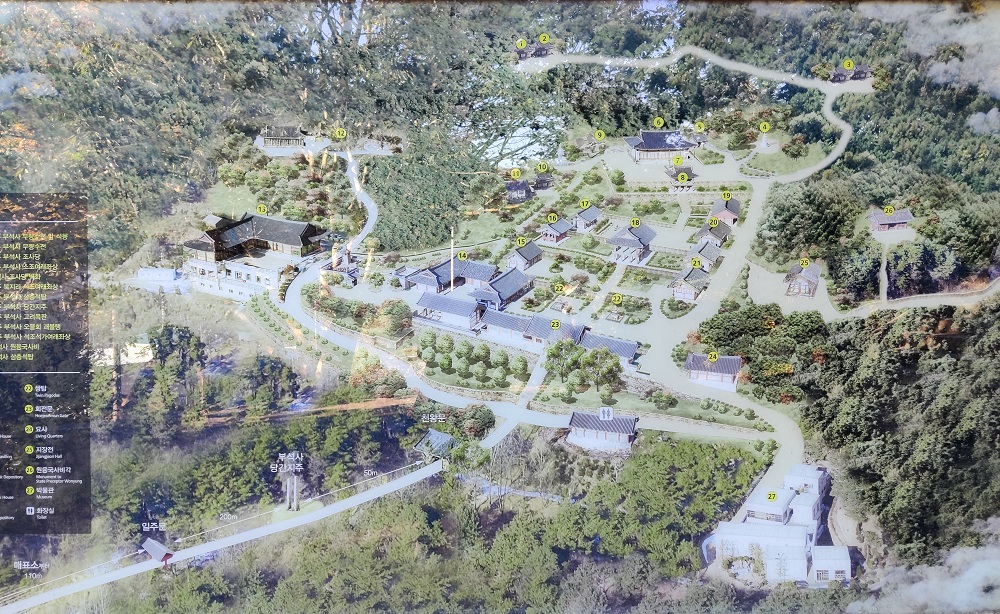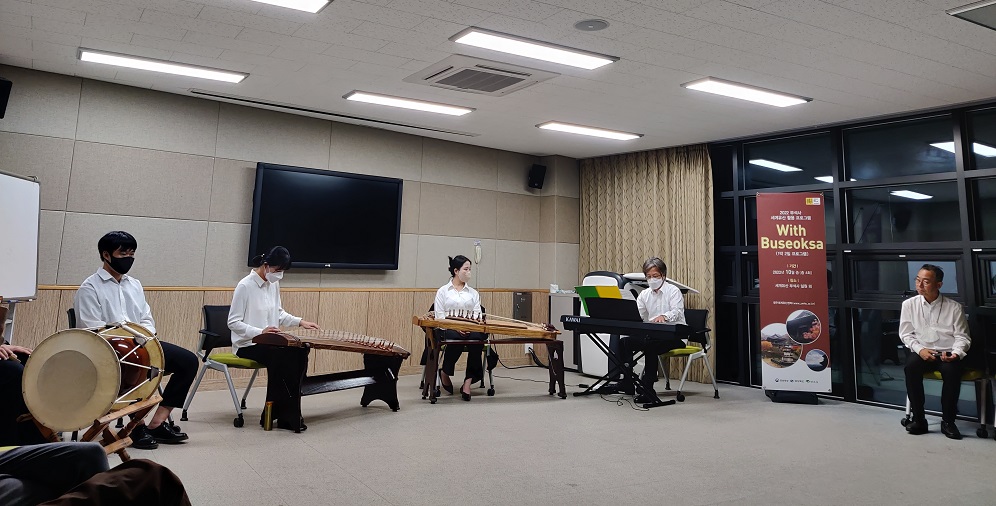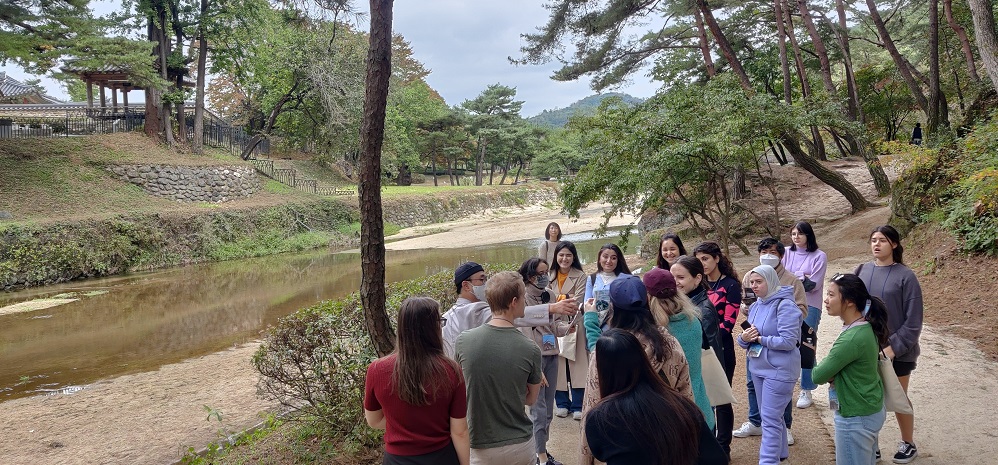We are aware that Buddhism was originally introduced in India by Gautama Buddha (563–483 BCE) arround 2500 years ago. Later, South and Southeast Asia had a rapid growth of this religion. Theravada and Mahayana are the two primary branches of the immensely popular non-violence and reincarnation-based religions. However, Mahayana ideology is practiced in South Korea and its surrounding countries.
In the fourth century, when Korea was split into the three kingdoms of Paekche, Koguryŏ, and Silla, Buddhism first appeared on the Korean Peninsula from China. Koguryori, a kingdom in the north, was where Buddhism originally began, and it later trickled down to the other two kingdoms.
As we know, in Nineteenth-Century most human disasters happend, including the division of Korea began with Japan's defeat in World War II. As a result, on August 15, 1948, the Republic of Korea was founded in southern Korea. On the other hand, on September 9, 1948, the Democratic People's Republic of Korea was founded in northern Korea. At that time, the Soviet Union supported North Korea and America supported South Korea, and these lands were used as bases by the two superpowers in the World War. Although, for the past 70 years, the US has continued to provide all kinds of military assistance to South Korea. However, South Korea is the 10th largest economy today, with the help of America and of course the dedicated work of Koreans.
South Korea is divided into 17 provinces, including 6 metropolitan cities, 1 special city, 1 self-governing city (Jeju), and 9 provinces. Among them, Yeongju is a beautiful city located in North Gyeongsang Province. Those who have lived in or studied Korea know that there are numerous examples of Buddhism throughout Korea. Last 15-16 September 2022, I had an opportunity to visit this city and observed some signs. In today's article, I am sharing with you a travel story of Yeongju City:
1) How I got the opportunity to travel: The trip was organized by Funday Korea Network, was founded in 2016 with the goal of bringing together young people from over 80 different nations to create a global network thread built on cultural exchange. In the past, I travelled to several famous places through Funday Korea. They covered all expenses including my travel, overnight stay, meals during this 1 night and 2 days trip. As I work in an international organization, I got this opportunity. Many thanks to the outstanding facilities to Funday Korea Network. :)

Photo: Julhas infront of Sobaeksan National Park Center
2) Funday Korea Network: It is an excellent organization that organizes these programs regularly. Not without praising them visit their website for details: https://fundaykorea.com .
3) Distance from Seoul City: We started our journey at 7:30 AM from Yangjae Station, Seoul for Yeongju City, which is 168 km away and reached there at 10:30 PM after passing three hours.
4) UNCESCO Heritage Temples: On 4 July 2018, 7 famous temples built in the 7th and 9th centuries were recognized by UNCESCO as World Heritage. The temples are respectively: Tongdosa (built in the 7th century), Buseoksa (7th), Bongjeongsa (7th), Beopjusa (8th), Magoksa (9th), Seonamsa (9th), and Daeheungsa (9th).

Photo: Buseoksa Temple
5) Where we stayed: We were accommodated at Sobaeksan National Park Nature Center. It's a bit of luck to be able to spend the night in such a wonderful place. The beauty of this location, with its high mountains on three sides, large courtyards, some lakes, extensive marshes at the foot of the hills to the south, apple orchards to the north, and gardens built by this center to the west, cannot be described in words. The facilities were very appealing, including the food canteen, electric fuel tank, massage room, playground, music arena, library, and art gallery.

Photo: Sobaeksan National Park Center
6) Drawing: Here, first a drawing session was arranged for us, which was an unique experience. It also sheds some insights on Buddhism, and also shows how Buddhist bells are made and given to us as gifts. After finishing this episode, we joined the main program after some rest.

Photo: Drawing session in the Sobaeksan National Park Center
7) Buseoksa Temple: This temple was established in 676 by Master Uisang, Silla Kingdom. When Master Uisang was studying in the Tang Dynasty in China, he heard about the invasion of Silla by the Chinese Emperor Gaozong. He conveyed this news to King Munmu of Silla. The name Buseoksa is believed to be derived from the legend that a large rock located on the west side of Muryangsujeon, the main hall of Buseoksa Temple floated on top of another rock. During the Goryeo Dynasty, the temple was called Seondalsa.

Photo: Buseoksa Temple
Master Uisang has a great love story, which is a popular folktale in Korea. Korean folklore relates that when he was young, Uisang fell in love with a beautiful girl, Myo Hwa ("Delicate Flower"), but the King of Silla chose to send her as a gift to the Chinese emperor, and thus their relationship failed. Uisang turned to religious life and he became a Monk. Myo Hwa became depressed and tried to commit suicide in a river on the way to China. However, she was rescued and nursed back to health by a family who later adopted her. Many years later she met Master Uisang on his trip to China but he explained that he was now a monk and could not return to Silla with her as he wished. However, he said that he would visit her when he finished his studies in China. After ten years he did this. Unfortunately, Myo Hwa wasn't home so Master Uisang left her a note and hurried to bring his ship back to Silla. Myo Hwa returns home to realize that Master Uisang has come to visit her. She ran towards the sea in a bit of panic to see him. When she reached the port, the ship was already far from the shore and she jumped into the water in despair. According to legend, as she reached the water, she was magically changed into a dragon by the power of her love, enabling her to pursue the ship back to Silla. I do not know the detailed history after that. The picture below gives some truth to this story.

Photo: Myo Hwa and Dragon
8) Dinner: Traditional Korean food was arranged for us at night. On the menu was a sea fish fry whose taste will be remembered for a long time.

Photo: Traditional Korean food
9) Night Music Performance: Koreans are no doubt carriers of art and culture. A musical evening of 1 hour was arranged for us which was very charming.

Photo: Night Music Performance
10) Visiting Apple Orchards: It is good to say, it will not be wrong to call this city apple city. I had the opportunity to visit a few apple orchards as well.

Photo: Apple Orchards near to the Sobaeksan National Park Center. Credit: Mark Joseph
11) Visiting Sosuseowon Confucian Academy: I visited Sosuseowon Confucian Academy after exploring the apple orchard and having breakfast. This academy consists of a large area. It was founded during the Joseon Dynasty and is Korea's first seowon, private Neo-Confucian academy.

Photo: Sosuseowon Confucian Academy

Photo: Sosuseowon Confucian Academy

Photo: Sosuseowon Confucian Academy
12) Yeongju Seobbichon Village: The founder of Neo-Confucianism, he first established this village. Jeong Do-jeon, the founder of the Joseon Dynasty, was born in this village. If you don't see this village established so many years ago, you would not understand how developed the Korean village society was. However, we explored the entire village.
Video: Yeongju Seobbichon Village
13) Hash tags and our guide: On this trip, we were told to post on social media with pictures of 5 notable places of the Buseoksa temple. Although I can't give, I was also given a great gift because I will write the blog. :) Our guides were incredibly knowledgeable, courteous and helpful. Thanks to them for introducing Korean cultures!

Photo: Our guides
14) Our translator: Our translator, Miss Lazzat, an Uzbek student studying in Korea, gave us a wonderful explanation of each location. She is beautiful, kind, modest, and tremendously helpful. Thanks Lazzat! :)

Photo: Our translator Miss Lazzat
15) Others who were with me: Students and employees of various educational institutions from the Netherlands, South Africa, Russia, Uzbekistan, Kazakhstan, Iran, Egypt, Philippines, and Myanmar. A great time was had by all. The next evening we returned to Seoul.

Photo: Other participants
References: 1. Sansa 2. https://en.wikipedia.org/wiki/Yeongju 3. https://en.wikipedia.org/wiki/Uisang 4. https://www.yeongju.go.kr/open_content/sosuseowon/index.do 5. https://en.wikipedia.org/wiki/Sosu_Seowon 6. https://www.history.com/topics/religion/buddhism 7. https://en.wikipedia.org/wiki/Division_of_Korea 8. https://english.visitkorea.or.kr/enu/ATR/SI_EN_3_1_1_1.jsp?cid=805481 9. https://fundaykorea.com/B01
[If you copy or share this article, I must credit the author. Please use reference link as: www.julhas.com/travelling/yeongju-buseoksa-temple-en ]